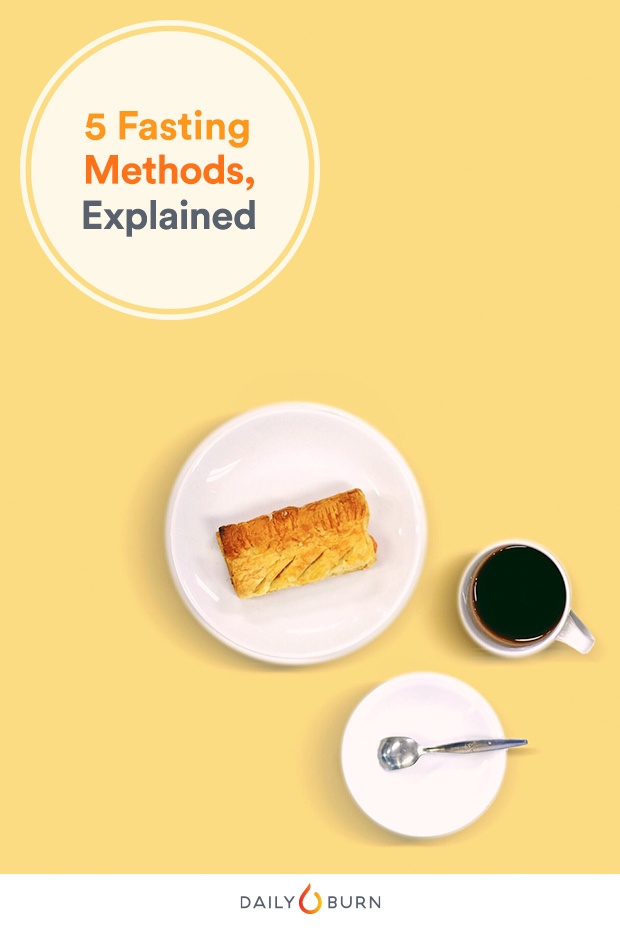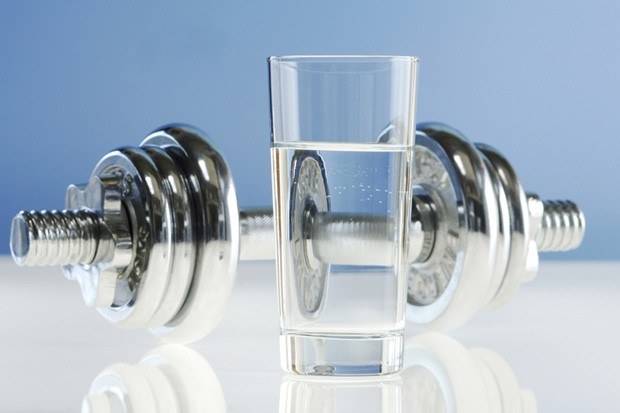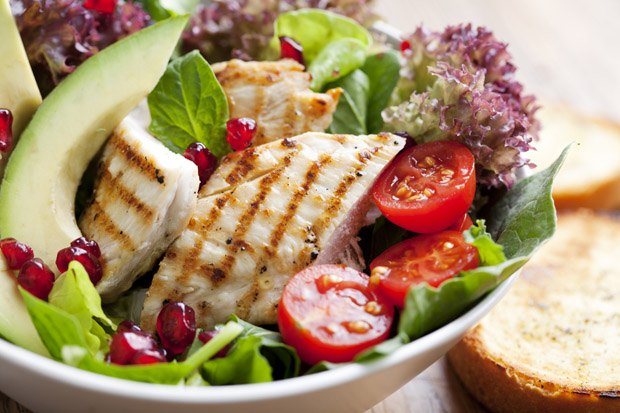
Photo: Twenty20
We’ve all heard of the latest fad diets: The no-fat, all-fat, cabbage-soup, six-small-meals, raw-veggies-no-dressing, gluten-free eating plans supposedly proven to help you lose weight fast.
What if we told you that the answer to losing weight, improving body composition, and feeling better isn’t about dieting, but instead skipping meals every once in a while? For some, intermittent fasting, or going a longer period of time — usually between 14 and 36 hours — with few to no calories, can be a lot easier than you may think. And the benefits might be worth it. If you think about it, all of us “fast” every single day — we just call it sleeping. Intermittent fasting just means extending that fasting period, and being a bit more conscious of your eating schedule overall. But is it right for you? And which method is best?
RELATED: Intermittent Fasting: Should You Exercise on Empty?
The Science of Fasting
As far back as the 1930s, scientists have been exploring the benefits of reducing calories by skipping meals. During that time, one American scientist found that significantly reducing calories helped mice live longer, healthier lives. More recently, researches have found the same in fruit flies, roundworms and monkeys. Studies have also shown that decreasing calorie consumption by 30 to 40 percent (regardless of how it’s done) can extend life span by a third or more. Plus, there’s data to suggest that limiting food intake may reduce the risk of many common diseases. Some believe fasting may also increase the body’s responsiveness to insulin, which regulates blood sugar and helps control hunger.
RELATED: A Nutritionist’s Guide to Intermittent Fasting (Without Deprivation)
The five most common methods of intermittent fasting try to take advantage of each of these benefits. But different methods will yield better results for different people. “If you’re going to force yourself to follow a certain method, it’s not going to work,” says trainer and fitness expert Nia Shanks. “Choose a method that makes your life easier,” she says. Otherwise, it’s not sustainable and the benefits of your fasting may be short-lived.
So what’s the first step in getting started? Each method has its own guidelines for how long to fast and what to eat during the “feeding” phase. Below, you’ll find the five most popular methods and the basics of how they work. Keep in mind, intermittent fasting isn’t for everyone. Those with health conditions of any kind should check with their doctor before changing up their usual routine. Note that personal goals and lifestyle are key factors to consider when choosing a fasting method.
RELATED: Why This Trainer Swears by Intermittent Fasting

Photo: Dan Gold
Intermittent Fasting: 5 Methods
1. Leangains
Started by: Martain Berkhan
Best for: Dedicated gym-goers who want to lose body fat and build muscle.
How It Works: Fast for 14 (women) to 16 (men) hours each day, and then “feed” for the remaining eight to 10 hours. During the fasting period, you consume no calories. However, black coffee, calorie-free sweeteners, diet soda and sugar-free gum are permitted. (A splash of milk in your coffee won’t hurt, either.) Most practitioners will find it easiest to fast through the night and into the morning. They usually break the fast roughly six hours after waking up. This schedule is adaptable to any person’s lifestyle, but maintaining a consistent feeding window time is important. Otherwise, hormones in the body can get thrown out of whack and make sticking to the program harder, Berkhan says.
What and when you eat during the feeding window also depends on when you work out. On days you exercise, carbs are more important than fat. On rest days, fat intake should be higher. Protein consumption should be fairly high every day, though it will vary based on goals, gender, age, body fat and activity levels. Regardless of your specific program, whole, unprocessed foods should make up the majority of your calorie intake. However, when there isn’t time for a meal, a protein shake or meal replacement bar is acceptable (in moderation).
RELATED: The Pros and Cons of 6 Popular Weight Loss Diets
Pros: For many, the highlight of this program is that on most days, meal frequency is irrelevant. You can really eat whenever you want to within the eight-hour “feeding” period. That said, most people find breaking it up into three meals easier to stick to (since we’re typically already programmed to eat this way).
Cons: Even though there is flexibility in when you eat, Leangains has pretty specific guidelines for what to eat, especially in relation to when you’re working out. The strict nutrition plan and scheduling meals perfectly around workouts can make the program a bit tougher to adhere to. (You can learn more about the specifics — as well as when to time these meals — directly from Leangains here and here.)

Photo: Pond5
2. Eat Stop Eat
Started by: Brad Pilon
Best for: Healthy eaters looking for an extra boost.
It’s all about moderation: You can still eat whatever you want, but maybe not as much of it. A slice of birthday cake is OK, but the whole cake isn’t.
How It Works: Fast for 24 hours once or twice per week. During the 24 hour fast, which creator Brad Pilon prefers to call a “24 break from eating,” no food is consumed, but you can drink calorie-free beverages. After the fast is over, you then go back to eating normally. “Act like you didn’t fast,” Pilon says. “Some people need to finish the fast at a normal mealtime with a big meal, while others are OK ending the fast with an afternoon snack. Time it however works best for you, and adjust your timing as your schedule changes,” he says.
The main rationale? Eating this way will reduce overall calorie intake without really limiting what you’re able to eat — just how often, according to Eat Stop Eat. It’s important to note that incorporating regular workouts, particularly resistance training, is key to succeeding on this plan if weight loss or improved body composition are goals.
Pros: While 24 hours may seem like a long time to go without food, the good news is that this program is flexible. You don’t have to go all-or-nothing at the beginning. Go as long as you can without food the first day and gradually increase fasting phase over time to help your body adjust. Pilon suggests starting the fast when you are busy, and on a day where you have no eating obligations (like a work lunch or happy hour).
Another perk? There are no “forbidden foods,” and no counting calories, weighing food or restricting your diet, which makes it a bit easier to follow. That said, this isn’t a free-for-all. “You still have to eat like a grown-up,” Pilon says. It’s all about moderation: You can still eat whatever you want, but maybe not as much of it. (A slice of birthday cake is OK, he says, but the whole cake isn’t.)
Cons: Going 24 hours without any calories may be too difficult for some — especially at first. Many people struggle with going extended periods of time with no food, citing annoying symptoms including headaches, fatigue, or feeling cranky or anxious (though these side effects can dimish over time). The long fasting period can also make it more tempting to binge after a fast. This can be easily fixed… but it takes a lot of self-control, which some people lack.
RELATED: Does Fasted Cardio Really Burn More Fat?

Photo: Pond5
3. The Warrior Diet
Started by: Ori Hofmekler
Best for: People who like following rules. The devoted.
How It Works: Warriors-in-training can expect to fast for about 20 hours every day and eat one large meal every night. What you eat and when you eat it within that large meal is also key to this method. The philosophy here is based on feeding the body the nutrients it needs in sync with circadian rhythms and that our species are “nocturnal eaters, inherently programmed for night eating.”
The fasting phase of The Warrior Diet is really more about “undereating.” During the 20-hour fast, you can eat a few servings of raw fruit or veggies, fresh juice, and a few servings of protein, if desired. This is supposed to maximize the Sympathetic Nervous System’s “fight or flight” response, which is intended to promote alertness, boost energy, and stimulate fat burning.
The four-hour eating window — which Hofmekler refers to as the “overeating” phase — is at night in order to maximize the Parasympathetic Nervous System’s ability to help the body recuperate, promoting calm, relaxation and digestion, while also allowing the body to use the nutrients consumed for repair and growth. Eating at night may also help the body produce hormones and burn fat during the day, according to Hofmekler. During these four hours, the order in which you eat specific food groups matters, too. Hofmelker says to start with veggies, protein and fat. After finishing those groups, only if you are still hungry should you tack on some carbohydrates.
Pros: Many have gravitated toward this diet because the “fasting” period still allows you to eat a few small snacks, which can make it easier to get through. As the methodology explains (and the “success stories” section of The Warrior Diet website supports), many practitioners also report increased energy levels and fat loss.
Cons: Even though it’s nice to eat a few snacks rather than go without any food for 20-plus hours, the guidelines for what you need to eat (and when) can be hard to follow long-term. The strict schedule and meal plan may also interfere with social gatherings. Additionally, eating one main meal at night — while following strict guidelines of what to eat, and in what order — can be tough. It’s especially hard for those who prefer not to eat large meals late in the day.
RELATED: Want to Try a Fasting Diet? 6 Questions to Ask Yourself

Photo: Twenty20
4. Fat Loss Forever
Started by: John Romaniello and Dan Go
Best for: Gym rats who love cheat days.
How It Works: Not completely satisfied with the IF diets listed above? This method takes the best parts of Eat Stop Eat, The Warrior Diet and Leangains, and combines it all into one plan. You also get one cheat day each week (yay!) — followed by a 36-hour fast (which may be not-so-yay for some). After that, the remainder of the seven-day cycle is split up between the different fasting protocols.
Romaniello and Go suggest saving the longest fasts for your busiest days, allowing you to focus on being productive. The plan also includes training programs (using bodyweight and free weights) to help participants reach maximum fat loss in the simplest way possible.
Pros: According to the founders, while everyone is technically fasting every day — during the hours when we’re not eating — most of us do so haphazardly, which makes it harder to reap the rewards. Fat Loss Forever offers a seven-day schedule for fasting so that the body can get used to this structured timetable and reap the most benefit from the fasting periods. (Plus, you get a full cheat day. And who doesn’t love that?)
Cons: On the flip side, if you have a hard time handling cheat days the healthy way, this method might not be for you. Additionally, because the plan is pretty specific and the fasting/feeding schedule varies from day to day, this method can be a bit confusing to follow. (However, the plan does come with a calendar, noting how to fast and exercise each day, which may make it easier.)
RELATED: Want to Try a Fasting Diet? 6 Questions to Ask Yourself

Photo: Cecilia Par
5. UpDayDownDay ™ Diet (aka The Alternate-Day Diet or Alternate-Day Fasting)
Started by: James Johnson, M.D.
Best for: Disciplined dieters with a specific goal weight.
How It Works: This one’s easy: Eat very little one day, and eat like normal the next. On the low-calorie days, that means one fifth of your normal calorie intake. Using 2,000 or 2,500 calories (for women and men, respectively) as a guide, “fasting” (or “down”) day should be 400 to 500 calories. Followers can use this tool to figure out how many calories to consume on “low-calorie” days.
To make “down” days easier to stick to, Johnson recommends opting for meal replacement shakes. They’re fortified with essential nutrients and you can sip them throughout the day rather than split into small meals. However, meal replacement shakes should only be used during the first two weeks of the diet — after that, you should start eating real food on “down” days. The next day, eat like normal. Rinse and repeat! (Note: If working out is part of your routine, you may find it harder to hit the gym on the lower calorie days. It may be smart to keep any workouts on these days on the tamer side, or save sweat sessions for your normal calorie days.)
Pros: This method is all about weight loss, so if that’s your main goal, this is one to take a closer look at. On average, those who cut calories by 20 to 35 percent see a loss of about two and a half pounds per week, according to the Johnson UpDayDownDay Diet website.
Cons: While the method is pretty easy to follow, it can be easy to binge on the “normal” day. The best way to stay on track is planning your meals ahead of time as often as possible. Then you’re not caught at the drive-through or all-you-can-eat buffet with a grumbling belly.
RELATED: Should I Eat After Every Workout? Experts Weigh In
Food for Thought
It takes our bodies time to adjust, and some require more than others. “Be cautious at first, and start slowly [with a shorter fast],” Shanks recommends.
While these five methods are the most well-known in terms of integrating periods of fasting into your eating schedule, there are many other similar philosophies based on meal timing. For those who prefer a more fluid, less rigid method, there’s also the concept of eating intuitively. Primal Diet proponent Mark Sisson is a supporter of the Eat WHEN (When Hunger Ensues Naturally) method, where dieters simply eat whenever their bodies ask them to. However, some believe this can also lead to overeating or overconsumption of calories, since our bodies’ hunger-induced choices may be more caloric than otherwise.
Of course, fasting — regardless of the method — isn’t for everyone. If you have any medical conditions or special dietary requirements, it’s smart to consult a doctor before giving intermittent fasting a shot. Anyone who tries it should also plan to be highly self-aware while fasting. If it’s not agreeing with you, or if you need to eat a little something to hold you over, that’s just fine. It takes our bodies time to adjust, and some require more than others. Keep in mind that hormones can make it harder for women to follow a fasting plan than for men. “Be cautious at first, and start slowly [with a shorter fast],” Shanks recommends. If it doesn’t make you feel better, try something different, or accept the fact that maybe fasting isn’t for you.
RELATED: The Raw Food Diet: Here’s What You Need to Know
5 Tips for Starting Your First Fast
If you do give fasting a try, keep these general tips in mind:
- Drink plenty of water. Staying well hydrated will make the fasting periods much easier to get through, Pilon says.
- Fast overnight. Throw yourself a bone and aim to fast through the night. That way, you’re (hopefully) sleeping during at least eight of those hours.
- Rewire your thought process. “Think of fasting as taking a break from eating,” Pilon says, not as a period of deprivation. It can be a way to break up the monotony of worrying about what you need to eat next and when. This is the mindset that will allow you do follow a fasting plan long-term, he says.
- Overcommit. It may seem counterintuitive, but the best plan is often to start when you’re busy — not on a day when you’ll be sitting on the couch wanting to snack.
- Hit the gym. Pairing intermittent fasting with consistent exercise will help you get better results. “It doesn’t have to be hardcore or crazy. It can be something as simple as a full-body strength training routine two or three times per week,” Shanks says.
Originally published May 2014. Updated June 2017.







































